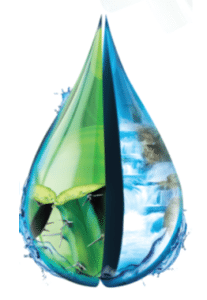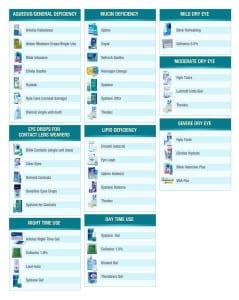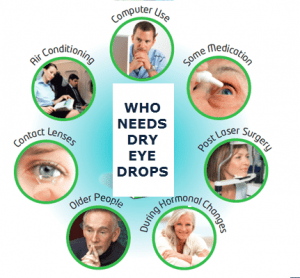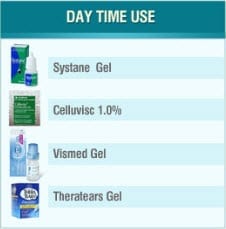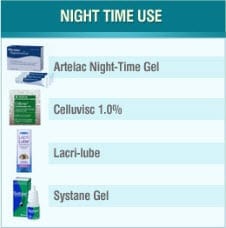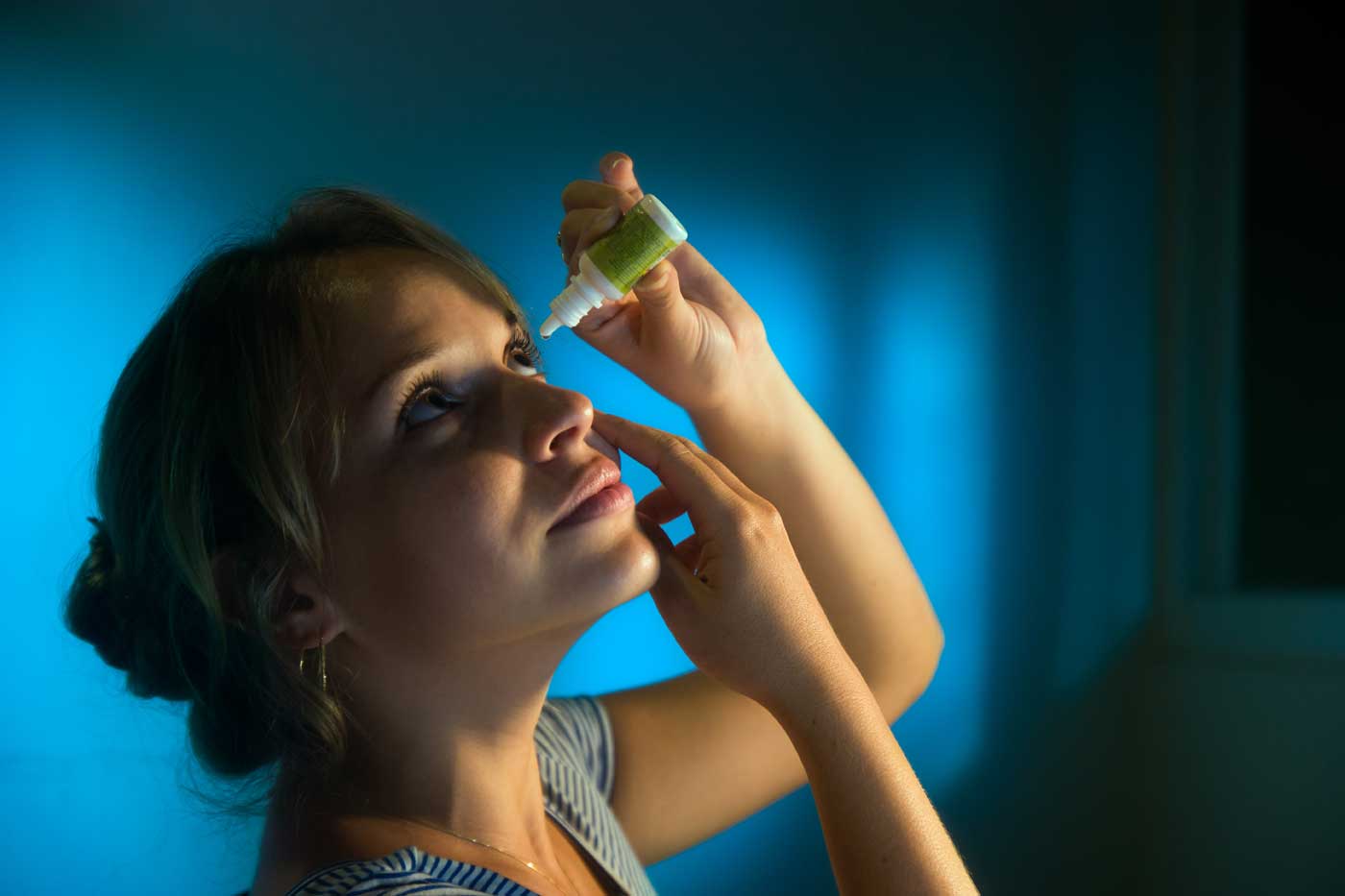
15 Apr How to Make Sense of Eye Drops for Dry Eyes
How to Make Sense of Eye Drops for Dry Eyes
There is a vast selection of eye drops currently on the market. It can often be difficult to know which eye drop is the best for you. Here we will try and give guidance particularly, on what is referred to as “over the counter” type eye drops, you get in your local Pharmacy.
The huge selection of drops available, for all sort of eye discomfort and symptoms, is a good indication of the size of the market.
Statistically, it is estimated that 40 % of the population suffer from dry eye alone, not to mention the frequent eye infections people periodically experience.
We have an easy to follow visual on the Causes and Symptoms of Dry Eyes here.
Some backround.
The tear film is made up of 3 layers and where the deficiency lies, indicates which eye drop will offer the greatest relief. We have an article describing the tear film and how to recognise which layer is deficient here.
The marketing material from eye drop manufacturers rarely explains which deficiency they are targeting. Elaborate descriptions of the product would imply they alleviate every known cause of dry eye. Unfortunately, having the best marketing techniques doesn’t mean that it is the best product.
How to categorize eye drops for dry eyes:
- Aqueous deficiency, (not enough tear).
- Aqueous deficiency associated with contact lenses, (disturbed tear film)
- Aqueous deficiency and Mucous deficiency combined. (lid glands and conjunctiva cells malfunctioning)
- Lipid deficiency (lid glands malfunctioning)
- Electrolyte re-balancing, (salt-lipid-water imbalance)
General descriptions are commonly used (e.g. for mild, moderate and severe dry eye, for use during the day/night etc).
As a general rule, night lubricants have a heavy viscous constituency which can blur your vision, and thus are not an issue while you sleep. Dehydration during the night while you sleep is common therefore a thick lubricant applied to the eye at night helps dry eye suffers to wake symptom-free. The effect of the lubrication can last for several hours into the following day.
Eye drops generally need to be disposed of 30 days after opening them. The preservative used tends to be ineffective after this period so the eye drops can become a source of infection once the preservative effectiveness has lapsed. Research has showed many commonly used preservatives cause irritation to the cornea.
Companies in response to this new data have formulated their eye drops in single unit dosage which are preservative free. These individual plastic vials are broken open and there is enough liquid for both eyes. New eye drop dispensers with antibacterial filters are available where the formulation is preservative free and can last 2 or 3 months once opened. Where possible a preservative-free formulation is best.
We have grouped many of the over the counter eye drops i.e. those you can buy in the viaqx.com pharmacy without a prescription. While these tables do not contain every available eye drop on the market they cover the categories they are aimed for.
We advise long-term chronic suffers to get a proper dry eye assessment. This will offer a more definitive direction in how to treat and self-manage their symptoms. Effectively dry eye symptoms are a frequently occurring persistent problem professional guidance to help select the right drops and treatment will save a lot of experimentation and mostly likely purchasing eye drops ineffective for dry eyes. We offer an on-line DRY EYE SURVEY to help you understand your dry eye symptoms. For further information call Dublin 01 8089013 or Cork 021 4826771
